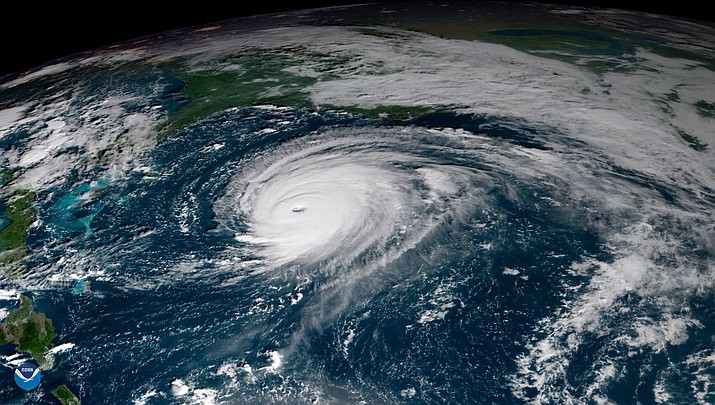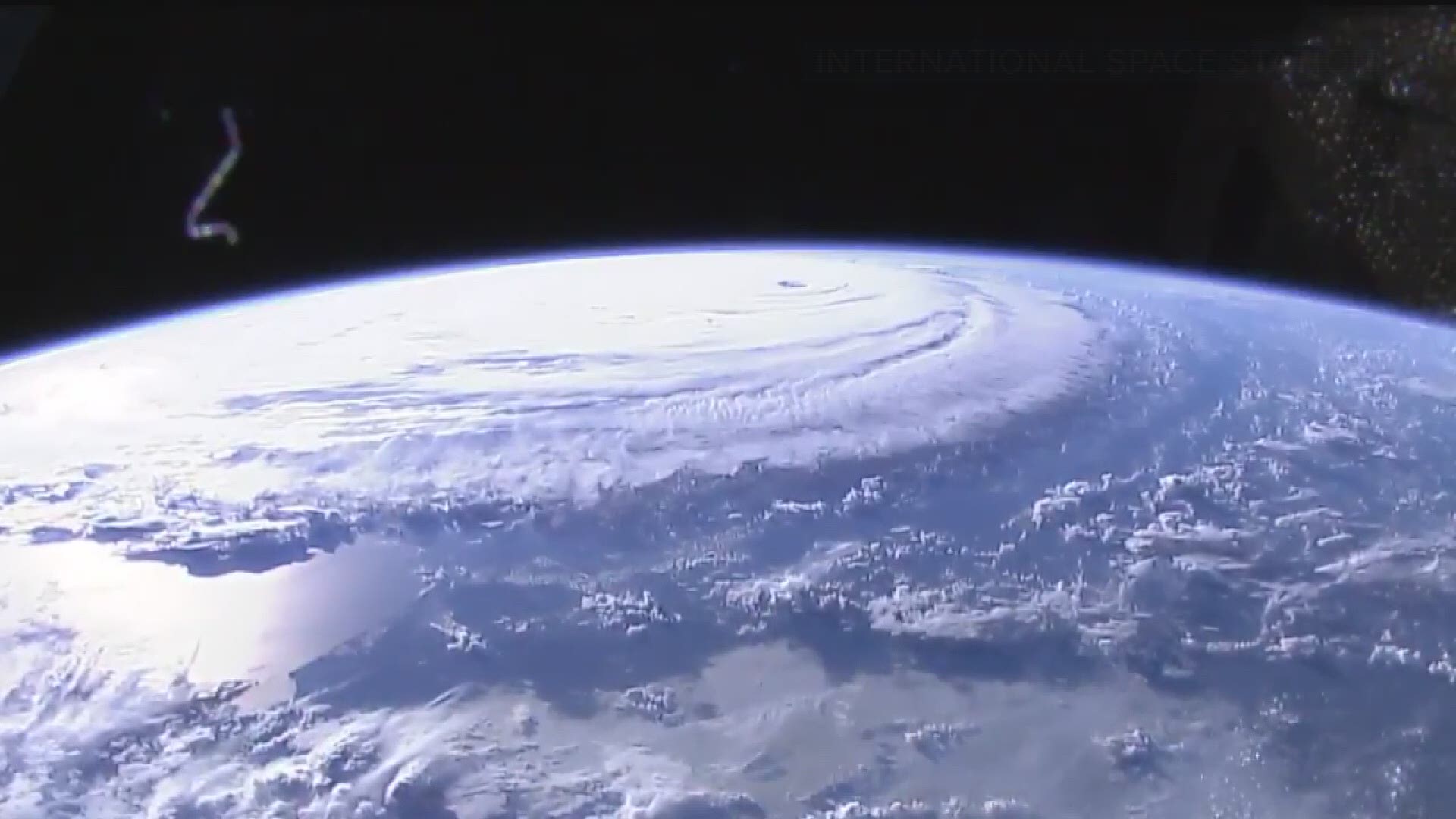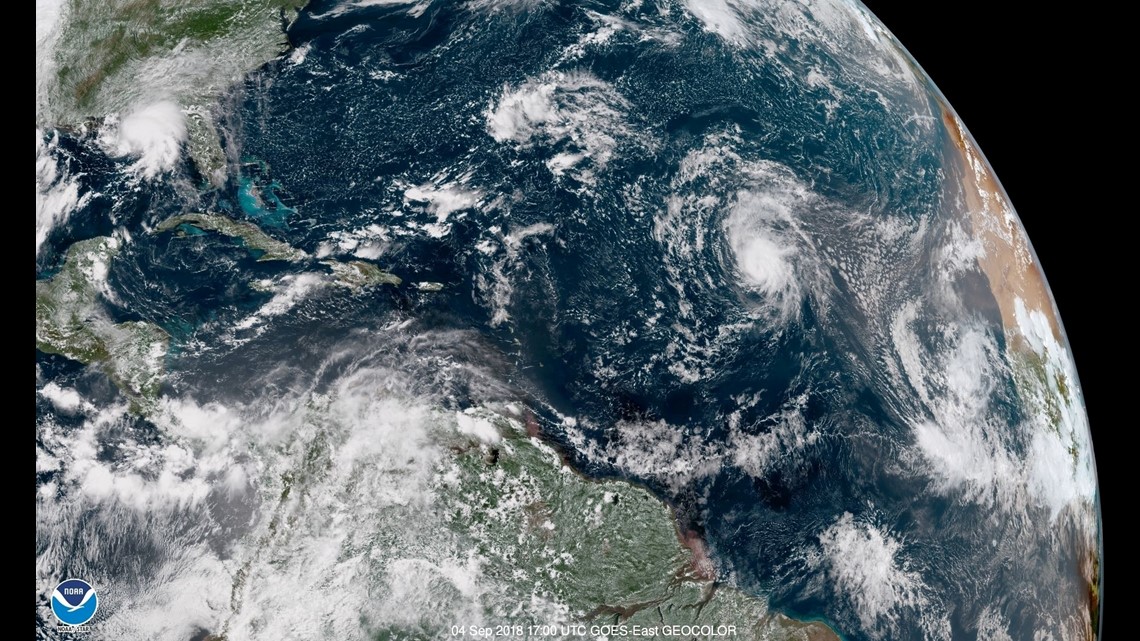
The TRMM satellite was placed into service in November 1997. Most of the rain was ahead of the storm (the broad blue and green area indicating light to moderate rain, respectively). The southeastern part of the eyewall, however, appears ragged. The data shows rain bands circling a rather large eye, which contains an area of intense rain (dark red arc) in the northwest eyewall. The rain rates are overlaid on infrared data from the TRMM Visible Infrared Scanner. Rain rates in the center swath are from the TRMM Precipitation Radar, while those in the outer swath are from the TRMM Microwave Imager. local time (23:05 UTC) on September 11, 2006, by the Tropical Rainfall Measuring Mission (TRMM) satellite. The image above shows the hurricane not long after it had passed Bermuda. It had not exceeded Category 1 intensity, nor was it projected to become more powerful, as of September 12. Florence formed from a tropical depression (low pressure area) on September 3, and it became the second hurricane of the season as it approached Bermuda. Before Florence, only Ernesto had managed to briefly reach minimal hurricane intensity. Although Florence was the sixth named storm of the season, no major hurricanes had occurred as of mid-September. Science Technology Office.As the 2006 Atlantic hurricane season neared the typical peak of storm activity in mid-September, Hurricane Florence was making its way northward through the western Atlantic near Bermuda. Mission is sponsored by NASA's Earth Ventures program and managed by the Earth With Blue Canyon Technologies and Wallops Flight Facility, Virginia.

Technology-demonstration mission led by Colorado State University and managedīy NASA's Jet Propulsion Laboratory in Pasadena, California, in partnership Reising, the principal investigator for TEMPEST-D at Colorado State University. Such aĭeployment would enable us to watch storms as they grow," said Steven To fly many of these miniaturized weather satellites in constellations. "TEMPEST-D paves the way for future missions where we can afford Weather satellites could one day help scientists provide more frequent updates Propulsion Laboratory in Pasadena, California. Sharmila Padmanabhan, who led the instrument development at NASA's Jet Level of detail in the small-satellite image is similar to what existingĬhallenged to fit this instrument into such a small satellite without compromisingĭata quality and were delighted to see it work right out of the box," said Gather more weather data and help researchers better understand storms.

Mission is to test new, low-cost technology that could be used in the future to Of the storm but doesn't reveal what's inside. With a visible image of Florence that shows the familiar cyclone-shaped clouds

The most intense rain shown in yellow and red. Green areas highlight the extent of the rain being produced by the storm, with Revealing the eye of the storm surrounded by towering, intense rain bands. Image Credit: NASA/NOAA/Naval Research Laboratory Monterey/JPL-CaltechĮxperiment for Storms and Tropical Systems Demonstration) captures Florence over the Atlantic Ocean, The image on the left is a visual image of the storm's clouds, taken by NOAA's GOES (Geoweather Operational Environmental Satellite). The green areas highlight the extent of the rain being produced by the storm, with the most intense rain shown in the yellow and red areas. The colors reveal the eye of the storm, surrounded by towering, intense rain bands.

The brightly colored image on the right was taken by TEMPEST-D (Temporal Experiment for Storms and Tropical Systems Demonstration) as it flew over Hurricane Florence on Sept.


 0 kommentar(er)
0 kommentar(er)
